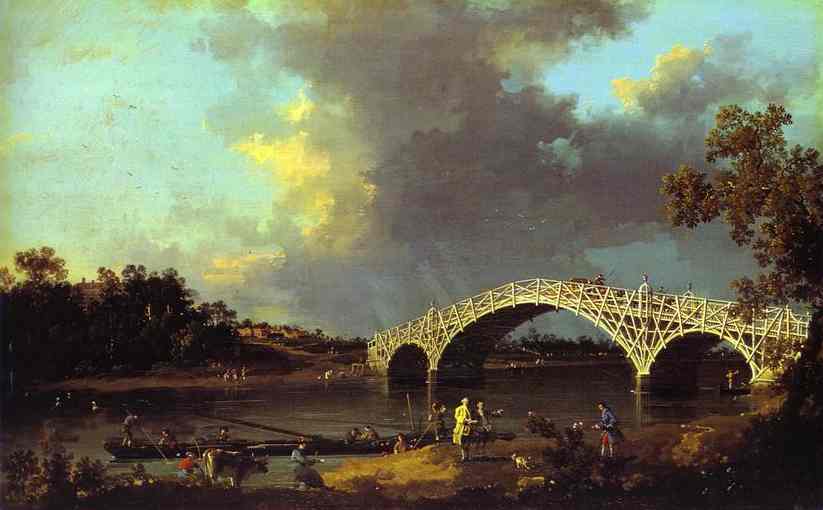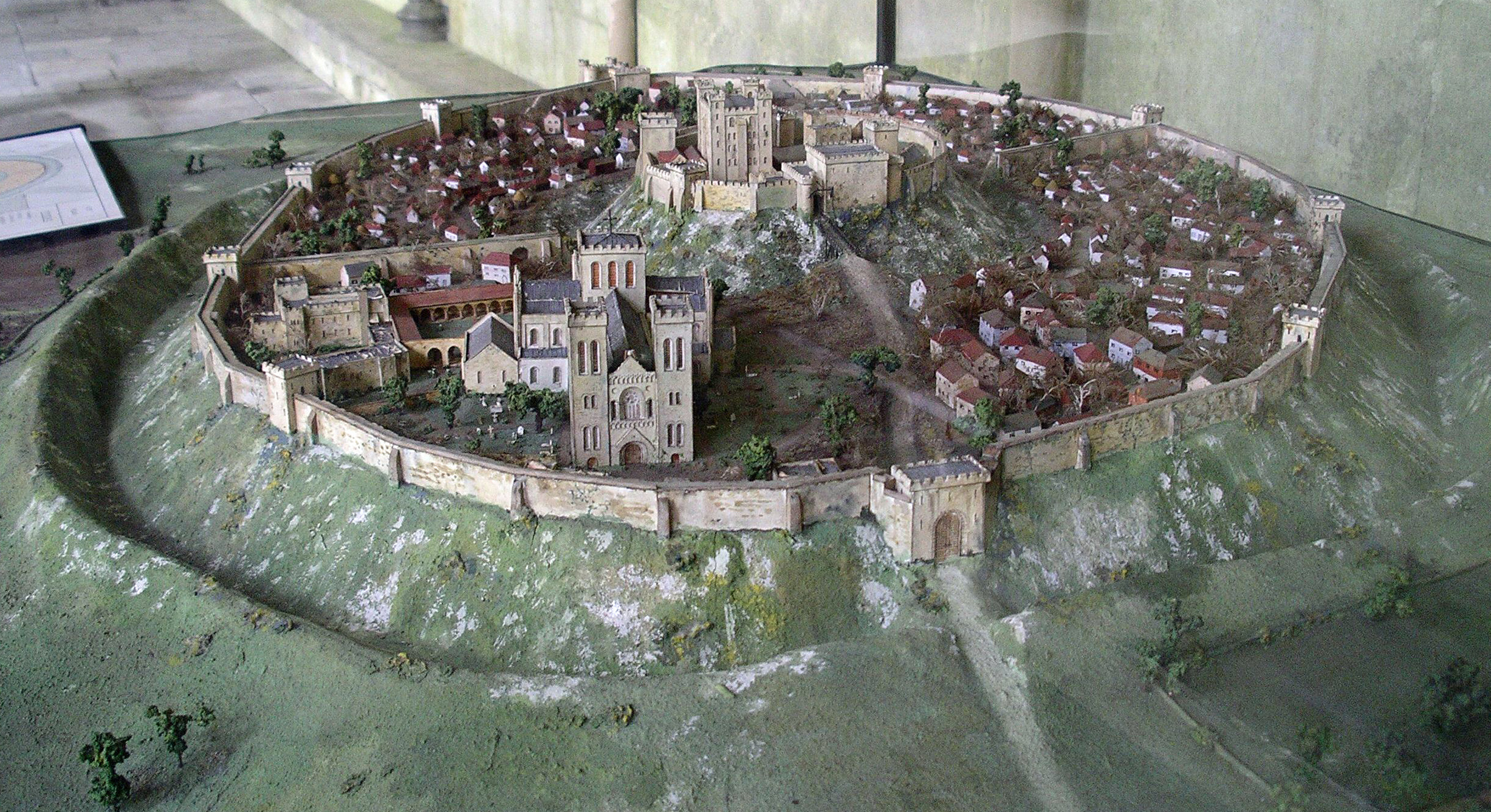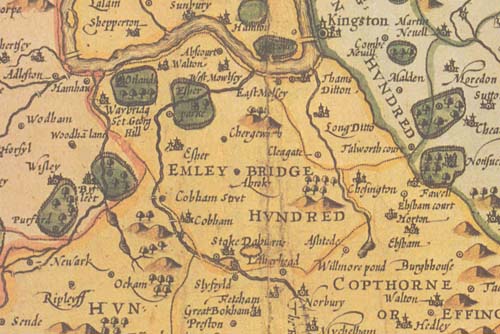|
Walton On Thames
Walton-on-Thames, known locally as Walton, is a market town on the south bank of the Thames in northwest Surrey, England. It is in the Borough of Elmbridge, about southwest of central London. Walton forms part of the Greater London Built-up Area, and is served by a wide range of transport links. According to the 2011 Census, the town has a total population of 22,834. The town itself consists mostly of suburban streets, with a historic town centre of Celtic origin. It is one of the largest towns in Elmbridge, alongside Weybridge. History The name "Walton" is Anglo-Saxon in origin and is cognate with the common phonetic combination meaning "Briton settlement" (literally, "Welsh Town" – weal(as) tun). Before the Romans and the Saxons were present, a Celtic settlement was here. The most common Old English word for the Celtic inhabitants was the "Wealas", originally meaning "foreigners" or "strangers". William Camden identified Cowey Stakes or Sale, Walton as the place whe ... [...More Info...] [...Related Items...] OR: [Wikipedia] [Google] [Baidu] |
Walton Bridge
Walton Bridge is a road bridge across the River Thames in England, carrying the A244 between Walton-on-Thames and Shepperton, crossing the Thames on the reach between Sunbury Lock and Shepperton Lock. The bridge is the first Thames road bridge which is on both banks upstream of Greater London. The bridge is the sixth on the site. Before the first bridge, the site had a ferry dating at least to the 17th century. Earlier crossings at the site Near Walton Bridge, and removed when the first bridge was built in 1750, were several barrows. Spearheads and earthenware vessels are said by James Douglas to have been found in them. From Elmbridge ferries run by operators under a Crown-granted monopoly, subject to conditions, existed since the Stuart period: The two remaining join those in London (the Twickenham Ferry and Woolwich Ferry) and seasonal visitor services in Oxford. Land near the relevant site was said in 1633 to have been washed away, reflecting the lack of the a ... [...More Info...] [...Related Items...] OR: [Wikipedia] [Google] [Baidu] |
Julius Caesar
Gaius Julius Caesar (12 or 13 July 100 BC – 15 March 44 BC) was a Roman general and statesman. A member of the First Triumvirate, Caesar led the Roman armies in the Gallic Wars before defeating his political rival Pompey in Caesar's civil war, a civil war. He subsequently became Roman dictator, dictator from 49 BC until Assassination of Julius Caesar, his assassination in 44 BC. Caesar played a critical role in Crisis of the Roman Republic, the events that led to the demise of the Roman Republic and the rise of the Roman Empire. In 60 BC, Caesar, Marcus Licinius Crassus, Crassus, and Pompey formed the First Triumvirate, an informal political alliance that dominated Roman politics for several years. Their attempts to amass political power were opposed by many in the Roman Senate, Senate, among them Cato the Younger with the private support of Cicero. Caesar rose to become one of the most powerful politicians in the Roman Republic through a string of military victories in the G ... [...More Info...] [...Related Items...] OR: [Wikipedia] [Google] [Baidu] |
Fishery
Fishery can mean either the enterprise of raising or harvesting fish and other aquatic life or, more commonly, the site where such enterprise takes place ( a.k.a., fishing grounds). Commercial fisheries include wild fisheries and fish farms, both in freshwater waterbodies (about 10% of all catch) and the oceans (about 90%). About 500 million people worldwide are economically dependent on fisheries. 171 million tonnes of fish were produced in 2016, but overfishing is an increasing problem, causing declines in some populations. Because of their economic and social importance, fisheries are governed by complex fisheries management practices and legal regimes that vary widely across countries. Historically, fisheries were treated with a " first-come, first-served" approach, but recent threats from human overfishing and environmental issues have required increased regulation of fisheries to prevent conflict and increase profitable economic activity on the fishery. Modern ju ... [...More Info...] [...Related Items...] OR: [Wikipedia] [Google] [Baidu] |
Mill (grinding)
A mill is a device, often a structure, machine or kitchen appliance, that breaks solid materials into smaller pieces by grinding, crushing, or cutting. Such comminution is an important unit operation in many processes. There are many different types of mills and many types of materials processed in them. Historically, mills were powered by hand or by animals (e.g., via a hand crank), working animal (e.g., horse mill), wind ( windmill) or water (watermill). In the modern era, they are usually powered by electricity. The grinding of solid materials occurs through mechanical forces that break up the structure by overcoming the interior bonding forces. After the grinding the state of the solid is changed: the grain size, the grain size disposition and the grain shape. Milling also refers to the process of breaking down, separating, sizing, or classifying aggregate material (e.g. mining ore). For instance rock crushing or grinding to produce uniform aggregate size for construc ... [...More Info...] [...Related Items...] OR: [Wikipedia] [Google] [Baidu] |
Hide (unit)
The hide was an English unit of land measurement originally intended to represent the amount of land sufficient to support a household. The Anglo-Saxon hide commonly appeared as of arable land, but it probably represented a much smaller holding before 1066. It was a measure of value and tax assessment, including obligations for food-rent ('), maintenance and repair of bridges and fortifications, manpower for the army ('), and (eventually) the ' land tax. The hide's method of calculation is now obscure: different properties with the same hidage could vary greatly in extent even in the same county. Following the Norman Conquest of England, the hidage assessments were recorded in the Domesday Book of 1086, and there was a tendency for land producing £1 of income per year to be assessed at 1 hide. The Norman kings continued to use the unit for their tax assessments until the end of the 12th century. The hide was divided into four yardlands or virgates. It was hence nominally ... [...More Info...] [...Related Items...] OR: [Wikipedia] [Google] [Baidu] |
Salisbury
Salisbury ( , ) is a city status in the United Kingdom, cathedral city and civil parish in Wiltshire, England with a population of 41,820, at the confluence of the rivers River Avon, Hampshire, Avon, River Nadder, Nadder and River Bourne, Wiltshire, Bourne. The city is approximately from Southampton and from Bath, Somerset, Bath. Salisbury is in the southeast of Wiltshire, near the edge of Salisbury Plain. An ancient cathedral was north of the present city at Old Sarum Cathedral, Old Sarum. A Salisbury Cathedral, new cathedral was built near the meeting of the rivers and a settlement grew up around it, which received a city charter in 1227 as . This continued to be its official name until 2009 structural changes to local government in England, 2009, when Salisbury City Council was established. Salisbury railway station is an interchange between the West of England line, West of England Line and the Wessex Main Line. Stonehenge, a UNESCO World Heritage Site, is northwest o ... [...More Info...] [...Related Items...] OR: [Wikipedia] [Google] [Baidu] |
Feudal System
Feudalism, also known as the feudal system, was a combination of legal, economic, military, cultural, and political customs that flourished in medieval Europe from the 9th to 15th centuries. Broadly defined, it was a way of structuring society around relationships derived from the holding of land in exchange for service or labour. The classic definition, by François Louis Ganshof (1944), François Louis Ganshof (1944). ''Qu'est-ce que la féodalité''. Translated into English by Philip Grierson as ''Feudalism'', with a foreword by F. M. Stenton, 1st ed.: New York and London, 1952; 2nd ed: 1961; 3rd ed.: 1976. describes a set of reciprocal legal and military obligations of the warrior nobility and revolved around the key concepts of lords, vassals, and fiefs. A broader definition, as described by Marc Bloch (1939), includes not only the obligations of the warrior nobility but the obligations of all three estates of the realm: the nobility, the clergy, and the peasan ... [...More Info...] [...Related Items...] OR: [Wikipedia] [Google] [Baidu] |
Domesday Book
Domesday Book ( ; the Middle English spelling of "Doomsday Book") is a manuscript record of the Great Survey of much of England and parts of Wales completed in 1086 at the behest of William the Conqueror. The manuscript was originally known by the Latin name , meaning "Book of Winchester, Hampshire, Winchester", where it was originally kept in the royal treasury. The ''Anglo-Saxon Chronicle'' states that in 1085 the king sent his agents to survey every shire in England, to list his holdings and dues owed to him. Written in Medieval Latin, it was Scribal abbreviation, highly abbreviated and included some vernacular native terms without Latin equivalents. The survey's main purpose was to record the annual value of every piece of landed property to its lord, and the resources in land, labour force, and livestock from which the value derived. The name "Domesday Book" came into use in the 12th century. Richard FitzNeal wrote in the ( 1179) that the book was so called because its de ... [...More Info...] [...Related Items...] OR: [Wikipedia] [Google] [Baidu] |
Hundred (country Subdivision)
A hundred is an administrative division that is geographically part of a larger region. It was formerly used in England, Wales, some parts of the United States, Denmark, Sweden, Finland, Norway, and in Cumberland County, New South Wales, Cumberland County in the British Colony of New South Wales. It is still used in other places, including in Australia (in South Australia and the Northern Territory). Other terms for the hundred in English and other languages include ''#wapentake, wapentake'', ''herred'' (Danish and Bokmål, Bokmål Norwegian), ''herad'' (Nynorsk, Nynorsk Norwegian), ''härad'' or ''hundare'' (Swedish), ''Harde'' (German), ''hiird'' (North Frisian language, North Frisian), ''kihlakunta'' (Finnish), and ''cantref'' (Welsh). In Ireland, a similar subdivision of counties is referred to as a Barony (Ireland), barony, and a hundred is a subdivision of a particularly large townland (most townlands are not divided into hundreds). Etymology The origin of the division of ... [...More Info...] [...Related Items...] OR: [Wikipedia] [Google] [Baidu] |
Elmbridge (hundred)
The Hundred of Elmbridge or Elmbridge/Emley Hundred was a geographic subdivision (called a "hundred (country subdivision), hundred") in the north of the county of Surrey, England. The majority of its area forms the modern Borough of Elmbridge, with the remainder forming part of the Royal Borough of Kingston upon Thames in Greater London. History Elmbridge appears in the Domesday Book of 1086 as ''Amelebrige'' an area used for strategic, secular purposes with a Hundred Court where local wealthy and powerful figures met about once a month. It also had in early centuries a small number of owners who attempted to charge and collect rent of all of the owners of the main manageable medieval asset in the country, the Manorialism, manors. Etymology The name refers to a bridge over the River Mole, Surrey, River Mole, which was originally called the River Emel or Amele, a word possibly meaning 'misty' and later had the alternate form Emlyn; the bridge may have been between Hersham and E ... [...More Info...] [...Related Items...] OR: [Wikipedia] [Google] [Baidu] |
Anglo-Saxons
The Anglo-Saxons, in some contexts simply called Saxons or the English, were a Cultural identity, cultural group who spoke Old English and inhabited much of what is now England and south-eastern Scotland in the Early Middle Ages. They traced their origins to Germanic peoples, Germanic settlers who became one of the most important cultural groups in Britain by the 5th century. The Anglo-Saxon period in Britain is considered to have started by about 450 and ended in 1066, with the Norman conquest of England, Norman Conquest. Although the details of Anglo-Saxon settlement of Britain, their early settlement and History of Anglo-Saxon England, political development are not clear, by the 8th century an Anglo-Saxon cultural identity which was generally called had developed out of the interaction of these settlers with the existing Romano-British culture. By 1066, most of the people of what is now England spoke Old English, and were considered English. Viking and Norman invasions chang ... [...More Info...] [...Related Items...] OR: [Wikipedia] [Google] [Baidu] |
Secondary Source
In Scholarly method, scholarship, a secondary sourcePrimary, secondary and tertiary sources . University Libraries, University of Maryland.Secondary sources ". James Cook University. is a document or recording that relates or discusses information originally presented elsewhere. A secondary source contrasts with a primary source, ''primary'', or ''original'', source of the information being discussed. A primary source can be a person with direct knowledge of a situation or it may be a document created by such a person. A secondary source is one that gives information about a primary source. In a secondary source, the original information is selected, modified and arr ... [...More Info...] [...Related Items...] OR: [Wikipedia] [Google] [Baidu] |










